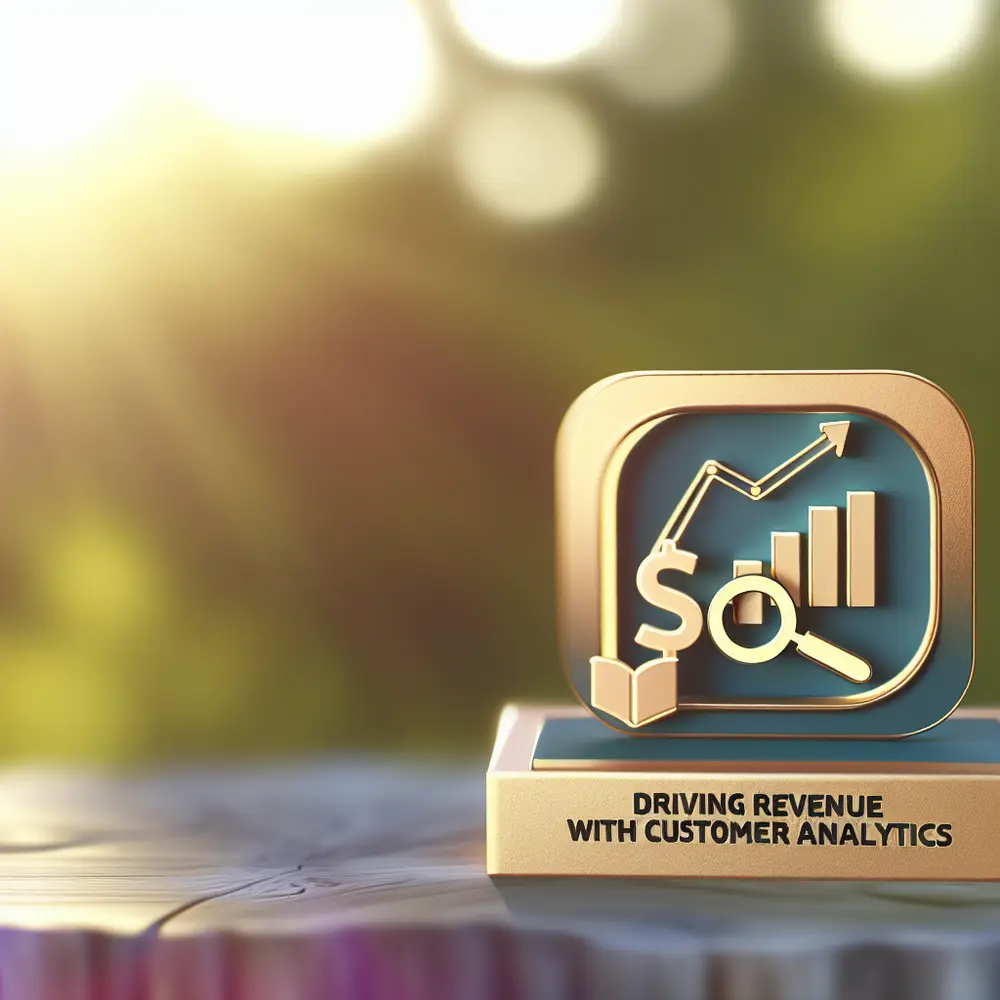Are you looking to enhance your business growth and revenue generation? Understanding customer analytics is crucial. The ability to analyze data provides insights into consumer behaviors, preferences, and purchasing patterns, enabling you to tailor your offerings effectively. Without leveraging these insights, your business may struggle to maintain a competitive edge.
In today’s fast-paced market, knowing your customer isn’t just an advantage; it’s a necessity. Businesses that fail to understand their customers risk losing market share to competitors who are more informed. By embracing customer analytics, you not only satisfy existing needs but also pave the way for innovation and adaptability in your marketing strategies.
As we dive deeper into customer analytics, we’ll explore how it can transform your decision-making process and enhance customer engagement. You’ll discover best practices that can significantly boost your revenue and improve customer relationships, enabling sustainable business growth.
Understanding Customer Analytics: The Foundation for Strategic Growth
Customer analytics is integral to developing strategies that drive revenue generation and business growth. When you leverage data analysis, you gain valuable insights into consumer behavior, preferences, and purchasing patterns. This understanding allows you to tailor your offerings effectively, maximizing your potential.
By segmenting your customer base, you identify distinct groups with varying needs and interests. This segmentation empowers you to create targeted campaigns that resonate with specific audiences. For instance, VivaStore, an e-commerce platform, implemented targeted marketing campaigns based on customer segments, resulting in a 30% increase in engagement rates and a 15% boost in sales.
Moreover, customer analytics enables you to predict future purchasing behaviors. By analyzing historical data, you can identify trends and forecast demand more accurately. This insight allows for efficient resource allocation, ensuring you meet customer demands promptly while avoiding overstock situations.
Integrating customer analytics into your decision-making process empowers you to make informed choices. Proactively validating concepts based on data-driven insights reduces risks associated with new product launches or marketing initiatives. TechVariety adopted this approach, leading to a 20% reduction in failed product launches and enhancing their market positioning.
Continuous evolution in customer analytics tools enhances the depth of insights available. Utilizing advanced technologies like machine learning and artificial intelligence allows for deeper analysis of customer data. ShopSmart, by automating pattern recognition, could swiftly adjust actions based on market changes, realizing a significant 25% increase in customer retention.
The Role of Data Analysis in Enhancing Customer Insights
Data analysis is crucial for understanding customer behavior and preferences. When you leverage data analysis effectively, you unearth trends that drive strategic decision-making, leading to enhanced customer insights. This deep understanding fosters business growth and effective revenue generation.
Through customer analytics, you can segment your audience based on factors such as purchasing behavior, demographics, and engagement levels. This allows you to craft personalized marketing strategies that resonate with different customer groups. For example, TrendyFashion enhanced their marketing efforts by personalizing campaigns based on segmented customer data, resulting in a remarkable 35% improvement in conversion rates.
Moreover, data analysis enables you to identify both profitable customer segments and areas that underperform. With this intelligence, you focus your resources on high-value opportunities. Continuous analysis also ensures that your offerings evolve with customer demands, enhancing satisfaction and loyalty.
Predictive analytics stands at the forefront of identifying future behaviors. By effectively analyzing historical data, you anticipate potential buying trends. This capability not only boosts customer satisfaction but also drives sustainable growth. SmartGourmet harnessed predictive analytics to anticipate customer needs, achieving a 20% increase in customer satisfaction through proactive solutions.
Integrating customer analytics with tools like CRM for WhatsApp enables real-time engagement, personalizing interactions that build stronger relationships. GlobalTech improved their customer relations by 40% through this integration, transforming customer insights into actionable strategies.
Leveraging Customer Analytics for Revenue Generation: Best Practices
Harnessing customer analytics serves as a cornerstone for effective revenue generation strategies. By utilizing data analysis, you gain actionable insights critical to growth. As competition intensifies, understanding customer behavior and preferences becomes paramount for maximizing revenue.
Integrating customer analytics into business practices lets you uncover patterns and trends not easily visible. By analyzing data points like purchase history and engagement metrics, you can tailor your offerings. OnlineMarket enhanced their sales by focusing on tailored marketing messages that resonated with their audience, leading to a 30% increase in revenue.
Additionally, investing in robust customer analytics tools can significantly amplify your revenue efforts. For instance, implementing advanced analytics through CRM for WhatsApp can provide real-time insights and facilitate personalized communication with customers. This approach enhances interactions, raising conversion rates by 25% for ExperiencePlus.
Best practices in customer analytics foster sustained growth. For example, maintaining a data-driven culture enables quick pivots in response to market changes. Training staff regularly on data interpretation cultivates an analytical mindset within your teams, as evidenced by a 15% boost in productivity at RetailRocket.
Ultimately, leveraging customer analytics enriches immediate revenue generation and sets a strong foundation for long-term success. As you evolve to meet changing consumer expectations, prioritizing data analysis ensures alignment with overall business objectives.
Key Metrics to Track: What Every Business Leader Should Know
Customer analytics drives growth and revenue generation by understanding and tracking critical metrics. Key figures like Customer Lifetime Value (CLV), Customer Acquisition Cost (CAC), and Churn Rate expose valuable customer insights.
Customer Lifetime Value (CLV) quantifies expected revenue from a customer throughout their relationship with your business. Understanding CLV enhances marketing strategy refinement, aiding in resource allocation toward retention efforts. For instance, HealthFirst optimized their offerings based on CLV analysis, realizing a 15% increase in customer retention.
Customer Acquisition Cost (CAC) gauges the total expense incurred to gain a new customer. Evaluating CAC effectiveness facilitates marketing strategy assessments. If CAC surpasses CLV, you can adjust marketing expenses to maintain financial health. This strategic adjustment led to HomeEssentials improving their CAC by 20%, directly enhancing profitability.
Churn Rate measures the percentage of customers discontinuing a service in a specific period. A heightened churn rate often signals dissatisfaction. Monitoring this metric allows you to identify improvement areas that can bolster long-term relationships. After identifying feedback patterns, GadgetHub reduced churn by 30% with targeted improvements.
Incorporating strategic metrics into a broader analysis framework captures customer behavior trends effectively. Segmenting customers based on purchasing habits reveals insights guiding product development and tailored marketing campaigns.
Using advanced tools like CRM for WhatsApp streamlines data collection and analysis, allowing you to act swiftly on valuable insights. Data integration enables refined targeting and service strategies.
Case Studies: Successful Companies Using Customer Analytics
Customer analytics has reshaped business operations, propelling significant revenue generation and growth. Various companies showcase how leveraging data analysis unlocks insights and enhances customer experiences.
Company A: Leading Retail Brand
Company A, a retail giant, heavily invested in customer analytics to refine marketing strategies. Analyzing product purchase patterns enabled them to identify top-sellers and seasonal trends, resulting in a staggering 25% revenue increase over two fiscal years.
Company B: Innovative Technology Firm
An innovative technology firm streamlined product offerings through customer analytics. They utilized advanced tools to analyze user behavior, leading to enhancements that increased satisfaction scores by 40% and significantly boosted their revenue through improved retention.
Company C: Subscription-Based Service
A subscription service provider employed analytics to enhance acquisition strategies. Targeted marketing based on demographic data boosted their subscriber base by 50% in one year, establishing a solid foundation for growth.
Company D: E-commerce Giant
The e-commerce giant optimized pricing strategies using customer analytics. Real-time data-driven analysis allowed them to adapt pricing dynamically, improving revenue and fostering customer loyalty through perceived value, vital in a competitive landscape.
Implications for Business Leaders
These case studies illustrate that adopting customer analytics is essential for a competitive edge. Leaders and marketers must embrace data-driven strategies to spur innovation. Investing in tools like CRM for WhatsApp can streamline communication and deliver critical insights, enhancing revenue growth.
Future Trends in Customer Analytics: Staying Ahead in Business
The customer analytics landscape is rapidly evolving, offering unprecedented growth opportunities. By harnessing advancements, your business can navigate challenges and seize emerging trends, ensuring competitive positioning.
Integrating artificial intelligence (AI) and machine learning into analytics enables efficient data processing, uncovering patterns that exceed human capabilities. Companies utilizing AI-driven analysis, like SmartRetail, experienced remarkable growth through informed decision-making based on data insights.
Additionally, predictive analytics empowers you to adopt proactive strategies. Historical data analysis allows for accurate forecasting of customer behavior, leading to tailored marketing campaigns and optimized operations that drive satisfaction and revenue.
The shift towards real-time analytics cannot be overlooked. Customers today expect immediate responses. Companies meeting these demands benefit from enhanced market presence. Implementing real-time analytics helps manage customer interactions effectively, fostering stronger relationships.
The rise of omnichannel strategies necessitates cohesive customer analytics approaches. Analyzing behavior across platforms creates seamless journeys, increasing retention. Integrating analytics with CRM systems enables efficient engagement with customers across various channels.
Conclusion: The Strategic Importance of Customer Analytics for Business Leaders
Customer analytics is a critical component for driving growth and enhancing revenue. In a data-driven landscape, understanding customer behavior through analytics equips leaders to make informed decisions, optimize operations, and elevate customer satisfaction.
Strategic customer analytics helps identify improvement opportunities. Data analysis reveals patterns that inform marketing strategies, tailoring offerings to meet customer expectations. Employing actionable insights fosters stronger relationships, increasing loyalty and repeat purchases.
Furthermore, effective customer analytics enables precise audience segmentation. Targeted campaigns enhance messaging and engagement likelihood. Leveraging analytics tools like CRM for WhatsApp streamlines communication, ensuring the right message reaches customers at optimal times.
By adopting a proactive data analysis approach, you can anticipate market trends and preferences, enabling rapid adjustments to strategies that promote sustained growth. This agility is crucial in today’s competitive environment, where customer expectations can shift rapidly.
Ultimately, integrating customer analytics is indispensable for leaders wishing to maximize revenue and support strategic decisions. Embracing data empowers organizations to foster growth and build a resilient foundation centered on customer insights.
Learn more about CRM for WhatsApp and how it can revolutionize your customer engagement strategies.









